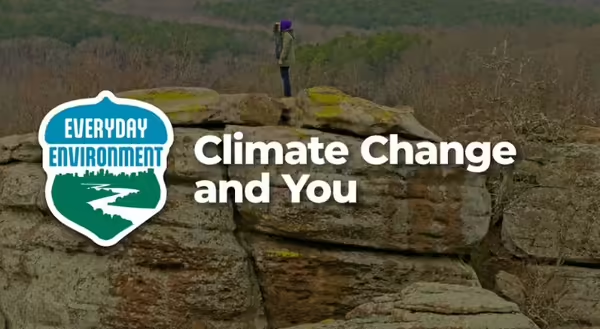
Climate change is impacting many aspects of our lives. Through increased frequency and severity of extreme weather events, worsening air quality, sea-level rise, and food and water insecurity, climate change is increasing the risk of a myriad of human health conditions. These can include heat-related illnesses, respiratory health conditions, water-borne diseases, vector-borne diseases, malnutrition, and mental health challenges.
Those impacted the most
Another important term when considering climate change and human health is health equity. Health equity is making sure that everyone has the same opportunity to be healthy and happy. In the absence of health equity, some groups of people are at greater risk for health problems. People and communities that are historically underinvested, have the least power, and have little access to resources, are at a greater risk of climate threats, even though they often contribute the least to climate change. These are often communities of color and low-income communities.
The difference between climate change mitigation and climate change adaptation
Climate change mitigation is using different strategies to slow down climate change by reducing greenhouse gas emissions. Climate change adaptation is using different strategies to reduce the impacts from climate change that are already happening. But these two concepts do not live in isolation - strategies to address climate change can both mitigate impacts and adapt communities to current climate conditions.
How can we protect people, places, and health?
There are many ways we can work to protect communities and people from the impacts of climate change. Some already exist and can be replicated in other places. Creative solutions are also encouraged! Communities all over the world are working to protect people, places, and health from the impacts of climate change.
Here are some different categories of strategies:
Built environment
The built environment is comprised of human made or modified structures for people. These include everything from parks and green spaces to bike lanes and other transportation hubs. It includes all the physical parts of where we live. Several communities have made strides in mitigating and adapting to climate change:
- Medellin, Colombia built a green corridor throughout the city.
- The small island nation of Kiribati purchased 20 square miles on one of the Fiji Islands.
- Butter Falls, Oregon purchased 400 acres of timberlands surrounding their community to grow an older, more biodiverse forest and manage the land to reduce wildfire threats.
Social infrastructure
These are the spaces that support the making of social connections and access to services. This could be physical spaces such as libraries, communities centers, and sidewalks, to programs that are designed to promote social interaction. There are great examples of the adaption and mitigation of climate change when it comes to social infrastructure:
- New York City developed the Be A Buddy program to connect residents most susceptible to the impacts from climate change with volunteers who can check in on them and connect them to services.
- Paris, France produced a cool-seeking app with over 800 cool spaces and places to go mapped.
Grey infrastructure
These are the infrastructure elements of communities that are built to collect and move stormwater from roadways, parking lots, and roofs into a series of piping. With the expected increase in heavy rainfall events, the adaptation of our grey infrastructure is key to survival in our current and future climate. Rotterdam, Netherlands is building water squares to serve as parks, basketball courts, skateboarding rinks, or amphitheaters when it is dry but can fill up and hold 450,000 gallons of water when it rains.
Systems
Frameworks that support how our society functions such as our education, housing, public health and transportation create a thriving community. Our systems must consider our climate future and adapt to the changes we see. Housing in a fire-prone area, for example, may consider new building codes that require fire-resistant material and HVAC systems that improve the air quality of the home.
Any actions to help build climate resilience need to start in the communities most impacted and these communities need to see the financial investment in order to implement and succeed in these strategies.
Listen to our Podcast with Elena
This article was written by Elena Grossman, Program Manager for GTI Energy, previously Climate Adaptation and Human Health Professor at Yale University, and Senior Research Specialist for University of Illinois Chicago
Thank you for reading!
Everyday Environment is a series of blogs, podcasts, webinars and videos on exploring the intricate web of connections that tie us to the natural world. Check out the podcast episode on this topic to hear more about climate change impacts on our health with Elena Grossman.
Subscribe to Everyday Environment Newsletter More about Everyday Environment